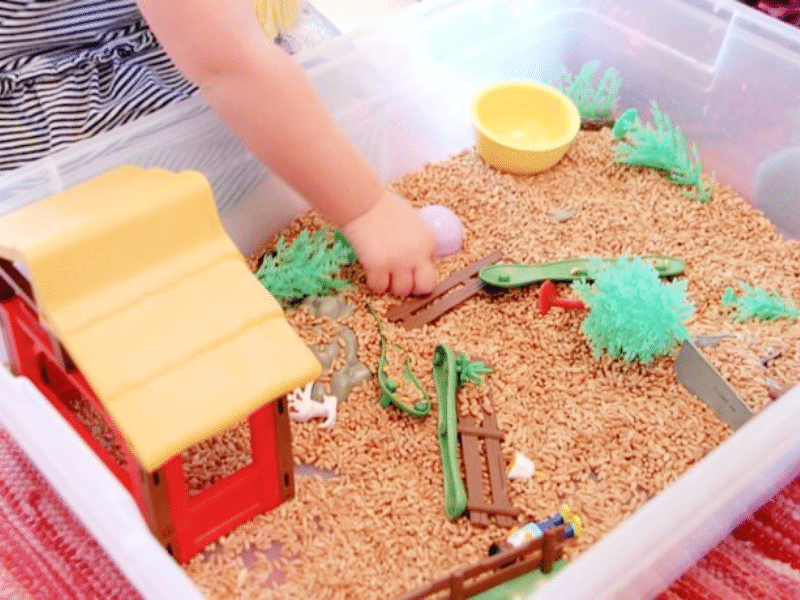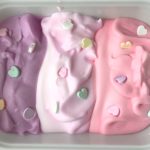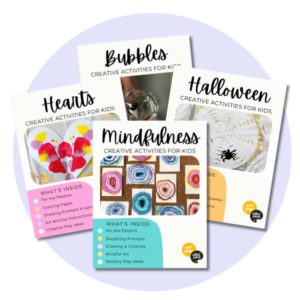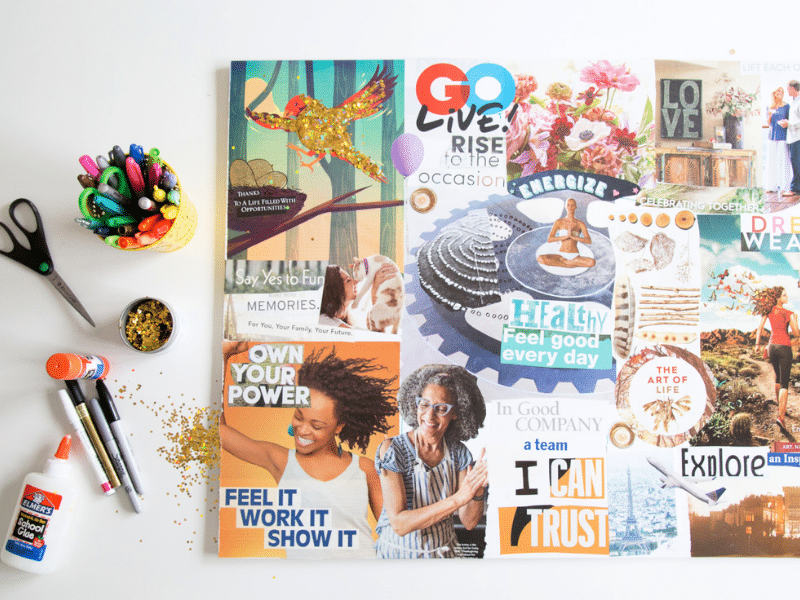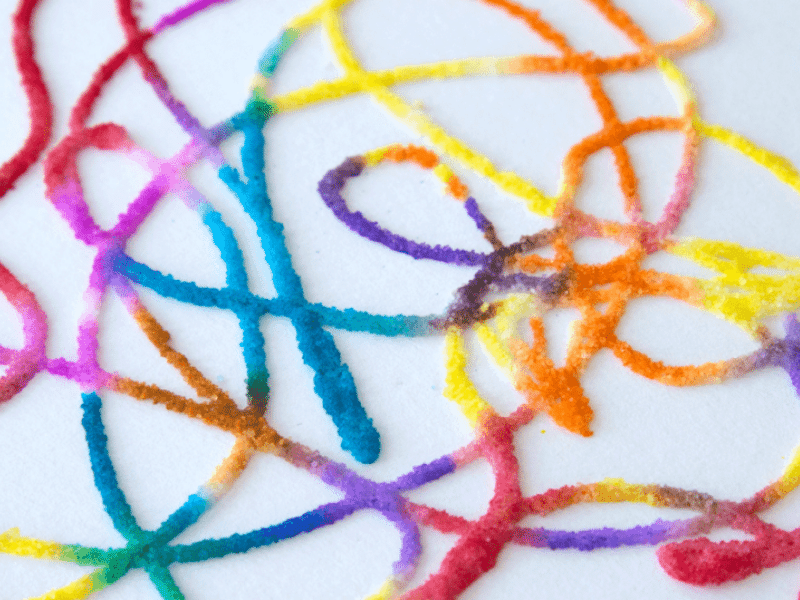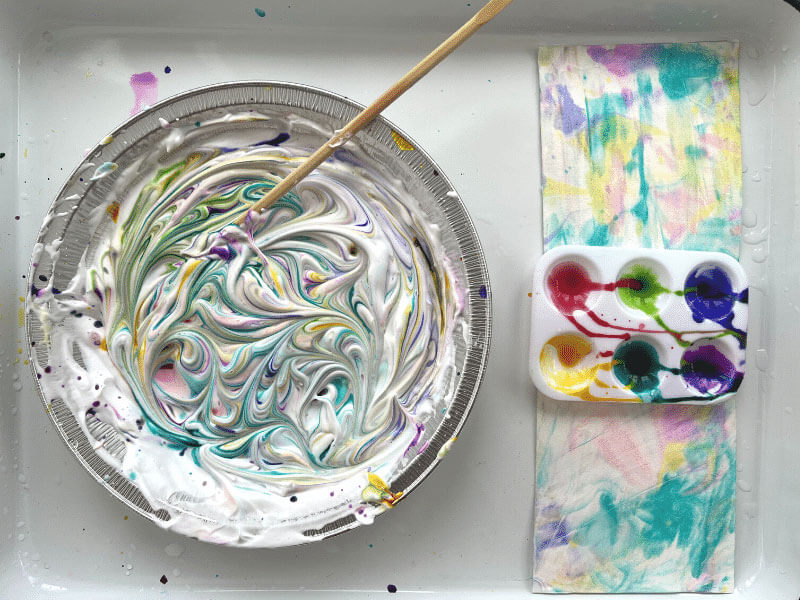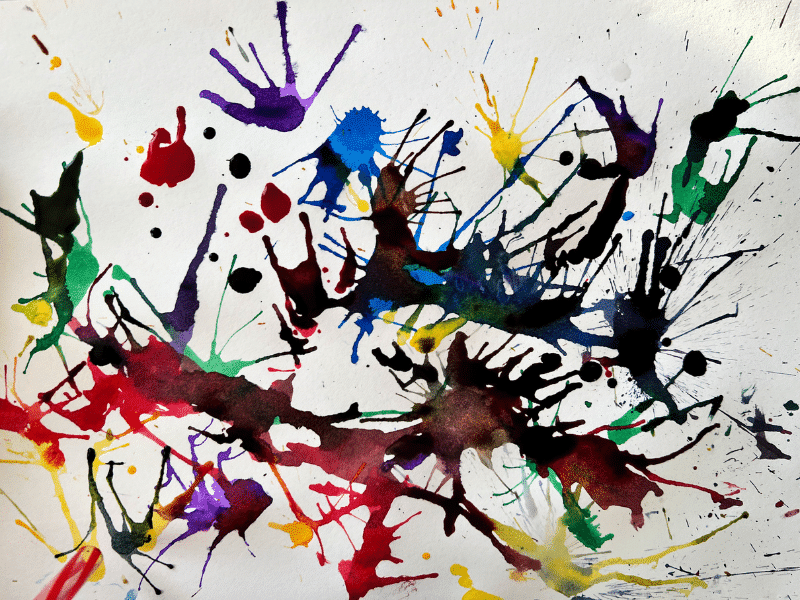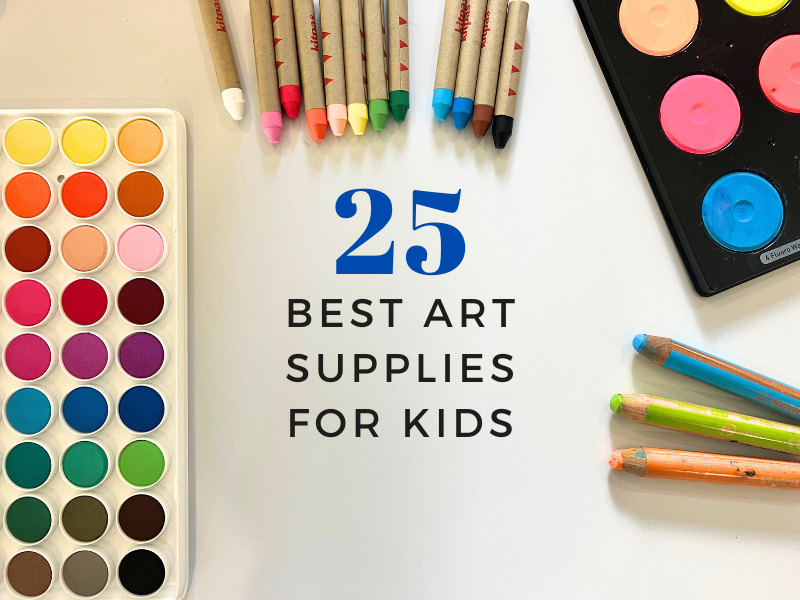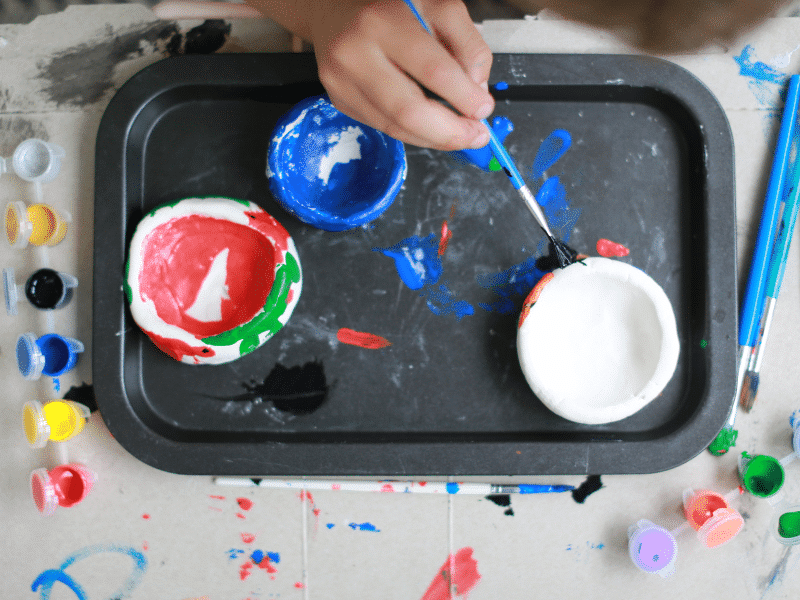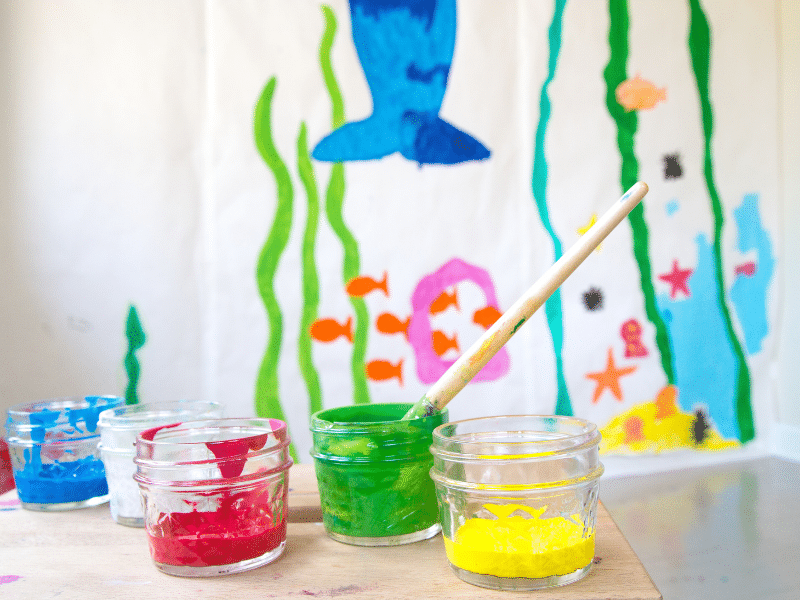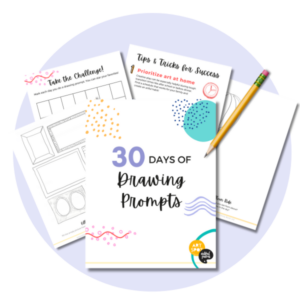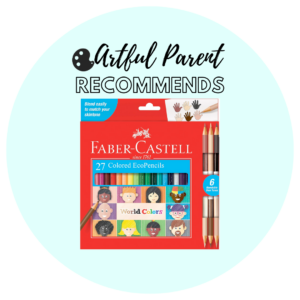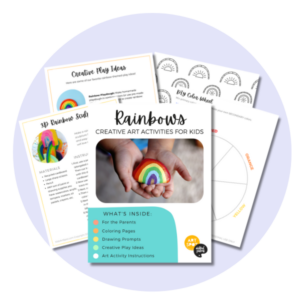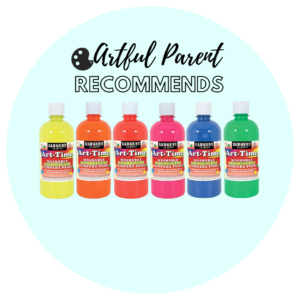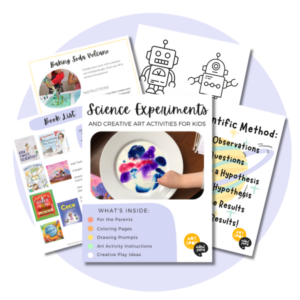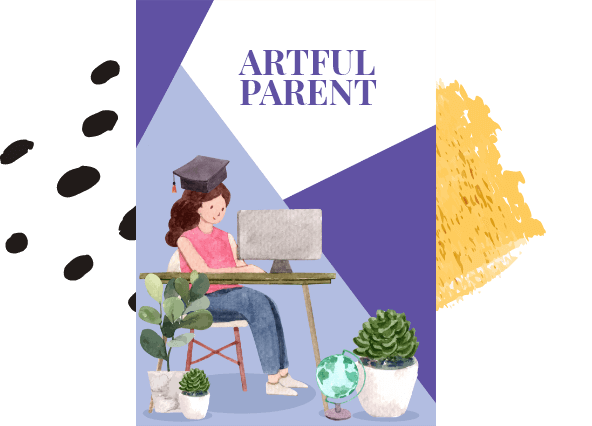Sensory activities are calming for toddlers & preschoolers and improve fine motor development and assist with language acquisition. Rachelle Doorley of Tinkerlab shares her favorite sensory activities to help your family get through the witching hour.
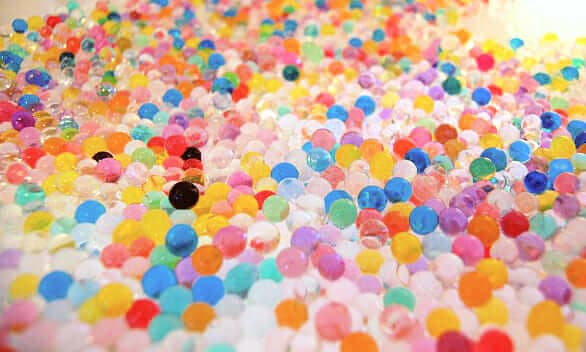
Updated May 2021
The Power of Sensory Activities
The other day my kids and I came home to a sink full of dishes, an art table that was hit by a tornado, and a living room that had been turned into fort city the night before.
In short, my home was a mess.
When we walked in the door my girls, ages 2 and 4, each wanted my attention—one asked me to help her with a Valentine-making activity and the other wanted me to play a mermaid game.
And me...
I had one eye on the dishes and another on the clock that was ticking closer and closer to dinner time, and I wanted to help my girls find something that they could work on together, without my assistance.
Do you have moments like this?
My first inclination is to say, “Just a minute…I have to wash these dishes and I’ll be right with you.” But this only frustrates my kids who can see, by the size of the dish pile, just how long that “minute” might be.

What I did instead was pull out a large plastic container that was filled with wheat berries, little bowls and scoopers, miniature trees and rocks, and small farm characters. I sat down on the kitchen floor with my girls for a few minutes and invited them to play with me. Sometimes this works and sometimes it doesn’t, but the other day they bit. And before you knew it they were pouring “rain” wheat berries on the farm. And inventing landscaping solutions, moving the characters through the imaginary world that confronted them.
After playing with them for a few minutes, I was able to step aside and get dinner going. Win-win!
The Benefits of Sensory Activities
- Calming: Playing with dry rice, sand, water, play dough, and other materials that stimulate the senses can calm children and improve their focus
- Find inner voice: Sensory experiences encourage children to tap their inner voice as they test their ideas and explore the phenomena of the material/s that are in front of them
- Fine motor development: Oftentimes sensory experiences foster fine motor skills as children are challenged to scoop, pour, cut, sift, or mold.
- Language acquisition: Sensory experiences can build language acquisition when adults facilitate the experience with contextual description language such as, “You’re moving the sand into the corner of the box,” or “Do you feel the warm water pouring over your hands?”
The Challenges of Sensory Activities {for grown-ups}
For the above-mentioned reasons, sensory experiences are wonderful for children, but one of the most common points of resistance from adults is that they are often, ahem, messy.
Yes, I said it.
But please, don’t let that stop you from introducing these experiences to your children.
In the wheat berry-filled box example I just shared, the aftermath of the experience is that my kitchen floor was covered in wheat berries. But it was easily cleaned with a few swift passes of the vacuum.
Favorite Sensory Activities for Kids
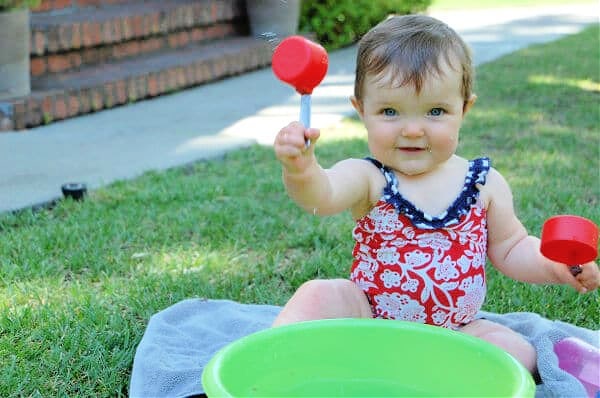
Water Scooping for Babies
This is one of the first sensory activities that my children were introduced to. We drink it, bathe in it, cook with it, and water our plants with it. Water is familiar to children, safe to touch, and endlessly fascinating.
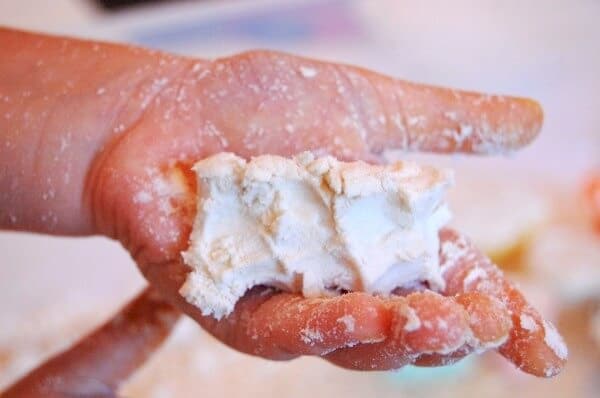
Cloud Dough
This moldable, yet crumbly, dough is made from flour and oil. That’s it. It’s so simple and I’ve found that even if it spills all over my table and hardwood floors, it’s easy to clean up. If you add a little bit of lavender oil to the dough it will also leave your hands with a yummy smell.

Slime
The texture of this gooey substance is somewhere between play dough and silly putty. If you have carpets you’ll want to cover them first, but this is otherwise a fine activity to do indoors.

Goop (also known as Oobleck)
A simple mixture of cornstarch and water. It feels like a solid, and then a liquid…the texture will boggle the mind.

Water Beads
You’ll want to keep a close eye on small children who mouth objects. This is one of the most popular sensory experiences in my home.

Tearing wet paper
I gave my toddler a tub of water to play with and she carried sheets of paper over to it. Before I knew it she was soaking the paper and shredding it. She loved this activity.
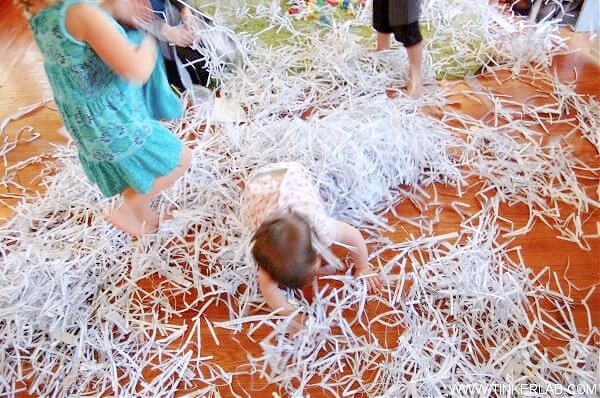
Shredded paper
This is a super messy activity, but my kids ask for it ALL the time. See what you think.
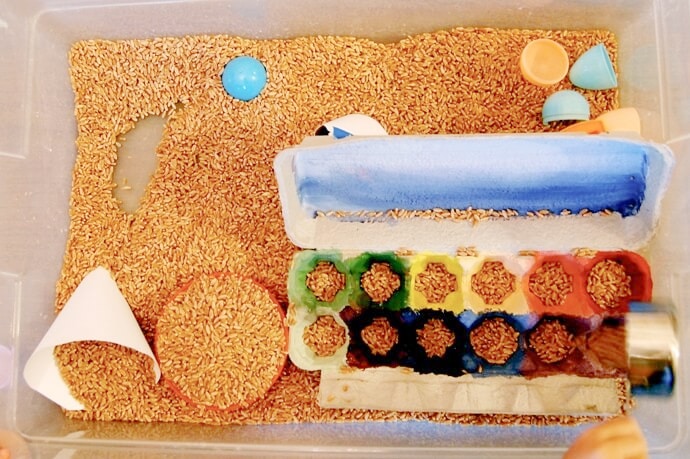
Wheat Berries
Read more about how my girls used wheat berries in their play. Wheat berries could easily be substituted with dry rice, beans, sand, or lentils.
More Sensory Activities for Kids
- 11 Awesome Sensory Materials for Kids
- Why Sensory Play is Important & 10 Sensory Bin Ideas for Kids
- How to Make Fizzy Potions for Fun Sensory Play
Pin It for Later

Related Posts
-
How to Make Aquafaba
Learn how to make aquafaba which is a fluffy, fun sensory play material for kids.…
-
How to Make Hand Puppets for Kids
Learn how to make hand puppets for kids in this easy make & play project…
-
How to Make a Circular Weaving for Kids
Danielle Falk of Little Ginger Studio shares a simple and effective way for kids to…


